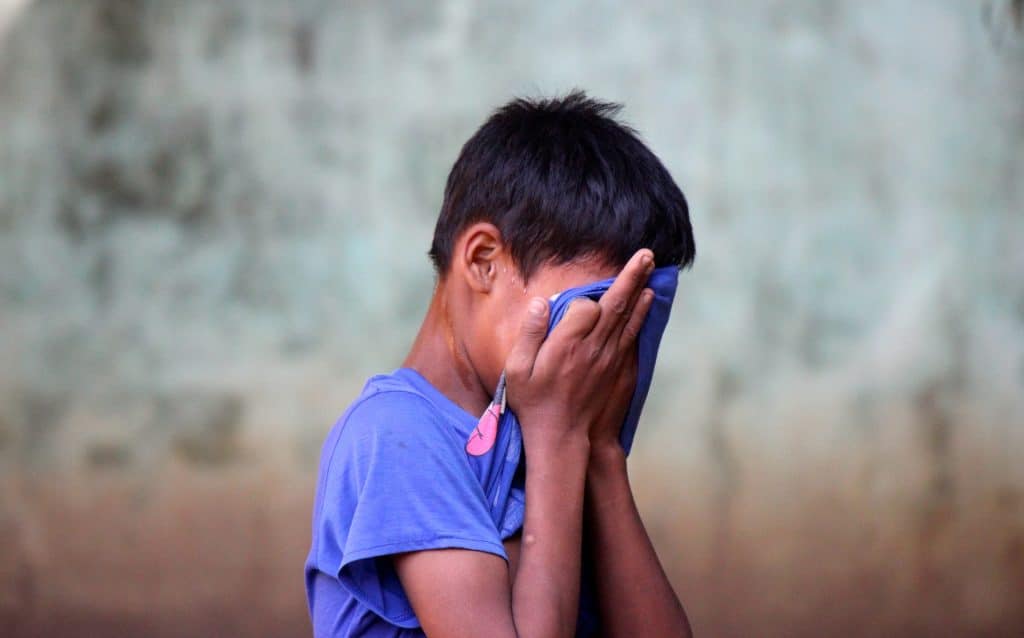Missing persons are individuals whose whereabouts and well-being are unknown, and their disappearance has been reported to law enforcement agencies. The reasons behind these disappearances can be complex, ranging from voluntary actions to sinister involvements.
In this article, we will delve into the diverse causes of missing persons and explore the challenges of comparing missing persons data across countries. We will also highlight some countries with alarming statistics of missing persons.
What Are the Key Reasons Behind Missing Persons?

The reasons behind missing persons are diverse and complex, spanning a wide spectrum of circumstances and motivations. Understanding these reasons is crucial for addressing this global issue, ensuring the safety of missing individuals, and implementing measures to prevent such incidents.
Kidnapping
Child Abduction: Child abduction is a heart-wrenching form of kidnapping where minors, often under the age of 18, are forcibly taken by individuals who are not their legal guardians.
These abductions can occur for various reasons, including custody disputes, family conflicts, or even stranger abductions. Child abduction cases are particularly concerning due to the vulnerability of young victims.
Ransom Situations: In some cases, kidnappers abduct individuals with the intent of demanding a ransom from their family or loved ones in exchange for the safe release of the victim.
These situations can be financially motivated and are a source of great distress for the families of the kidnapped individuals.
Human Trafficking: Human trafficking involves the abduction and exploitation of individuals, often for forced labor, sexual exploitation, or other criminal activities. Victims of human trafficking are subjected to physical and psychological abuse, and their freedom is severely restricted. This form of kidnapping is a grave violation of human rights and is a global concern.
Political Targets: Kidnapping can also be politically motivated, with individuals targeted for their affiliations, beliefs, or involvement in political activities. These cases can involve activists, journalists, or individuals who may be perceived as threats by political groups or governments. Political kidnappings are complex and can have far-reaching consequences.
Forced Disappearance
Involving Corrupt Governmental Agents or Criminal Activity: Forced disappearances are orchestrated by state actors or criminal organizations seeking to eliminate individuals they consider a threat or a liability.
In addition, victims of forced disappearance may be held in secret detention, and their fate remains unknown. Corrupt governmental agents or criminals perpetrate these acts with the intention of avoiding accountability and justice.
Missing in Action
During Military Service: Missing in action (MIA) refers to military personnel who go missing during combat or military operations.
In addition, these individuals are unaccounted for and are often the subject of extensive search and rescue efforts. MIAs are a somber aspect of armed conflicts, as their status is uncertain, and their families are left in limbo.
In Countries Undergoing Insurrections or Civil Unrest: Civil unrest and insurrections can lead to the disappearance of civilians. In these volatile situations, people may become displaced, separated from their families, or go missing due to the chaos and violence. Tracking and identifying missing individuals in such environments can be especially challenging.
Voluntary Disappearance
Juvenile Runaways: Juvenile runaways are minors who leave their homes voluntarily, often due to family conflicts, abuse, or personal reasons.
Furthermore, these cases are typically not criminal in nature but are a reflection of the challenges faced by young people. Runaways are at risk of various dangers, including exploitation and harm.
Avoiding Debt: Some individuals choose to disappear voluntarily to escape financial obligations or debts.
In addition, they may abandon their responsibilities, such as loans or financial commitments, and go off the grid to avoid legal repercussions or creditor pursuit.
Evading Law Enforcement or Criminal Elements: Individuals involved in criminal activities, such as organized crime or illegal enterprises, may opt to disappear voluntarily to evade capture by law enforcement or rival groups. This can include witness protection or individuals going underground to escape criminal associations.
Involuntary Disappearance
Dementia or Age-Related Incapacity: Elderly individuals suffering from dementia or other age-related mental health issues may wander away from their homes and become disoriented, eventually going missing. These cases are characterized by the person’s impaired cognitive abilities.
Mental Disability: Individuals with severe mental disabilities or conditions may become disoriented and go missing due to their inability to navigate and communicate effectively. This highlights the need for support and care for individuals with mental disabilities.
Accidents While Away from Home: Accidents, such as getting lost in unfamiliar surroundings, falling into bodies of water, or encountering wildlife, can lead to involuntary disappearances. These incidents can happen when individuals are away from their usual environments, and they may require search and rescue efforts to locate them.
Why is Kidnapping the Most Common Cause of Missing Persons?
The challenges of comparing missing persons data between countries are multifaceted and include variations in legal definitions, difficulties in data collection, disparities in reporting systems, and the influence of population size.
Varying Definitions
Legal Definitions: One of the significant challenges in comparing missing persons data across countries is the variation in legal definitions. Different nations have distinct criteria and legal frameworks for categorizing individuals as “missing persons.”
For example, some countries may require a specific waiting period before a person is considered missing, while others may not have such requirements. These differences can result in inconsistent reporting practices and data collection.
Age and Circumstance Considerations: Definitions may also vary based on the age of the missing person and the circumstances surrounding their disappearance. Some countries may have separate categories for missing children, adults, or vulnerable populations, such as those with mental disabilities.
Additionally, the criteria for what constitutes an involuntary disappearance versus a voluntary one can differ, leading to variations in reporting.
Data Collection
Challenges in Data Gathering: Obtaining comprehensive and accurate data on missing persons can be a daunting task. Various factors contribute to this challenge, including underreporting, lack of coordination between agencies. And difficulties in tracking missing persons who cross international borders. Missing persons cases are often spread across multiple jurisdictions, making it challenging to compile and verify data.
Privacy and Legal Concerns: Data collection is also hindered by privacy concerns and legal constraints. Law enforcement agencies and organizations responsible for gathering missing persons data must navigate privacy laws and regulations.
Which can limit the sharing of information across borders. This can lead to data gaps, especially in international cases.
Reporting Systems
Robustness of Reporting Systems: The effectiveness of reporting systems for missing persons varies widely between countries. Some nations have well-established and robust reporting systems that facilitate the quick and efficient reporting of missing individuals. These systems often involve dedicated law enforcement units, specialized databases, and communication channels with the public.
Underreporting: In contrast, countries with less developed or less effective reporting systems may experience underreporting of missing persons. This can be due to factors such as limited resources, insufficient training, or a lack of public awareness regarding the importance of reporting missing persons. Underreporting can result in an incomplete and potentially inaccurate picture of the extent of the issue in those regions.
Population Disparities
Large Populations: Larger countries tend to report more missing persons simply due to their larger populations. For example, a densely populated country like the United States will naturally have more reported missing persons than a smaller nation. This raw number can be misleading when trying to understand the prevalence of missing persons issues.
Per-Capita Comparisons: To make more meaningful comparisons, data on missing persons is often expressed per 100,000 residents or as a percentage of the population.
Per-capita comparisons allow for a more accurate assessment of the scope of the issue within a given country, making it possible to identify regions with disproportionately high rates of missing persons, even in countries with smaller populations.
Why Do Some Countries Have High Numbers of Missing Persons?

The high numbers of missing persons in these countries can be attributed to a range of factors, including population size, socio-economic conditions, political instability, and the presence of criminal and armed groups.
| Country | Key Information |
| India | A populous country with alarming statistics of missing persons, particularly in states like West Bengal, Delhi, Tamil Nadu, Maharashtra, Madhya Pradesh, and Rajasthan. |
| United Kingdom | Roughly 180,000 people go missing annually, with most cases involving children who are often found within 24 hours. |
| Syria | Ongoing conflict has led to a significant number of missing persons, reaching 100,000 in 2019. |
| Colombia | Known as the “Kidnapping Capital of the World,” Colombia has faced a persistent issue of kidnapping, driven by various armed groups. |
| Mexico | Organized crime contributes to the high number of missing persons, with many abductions going unreported due to fear of reprisals. |
| Nigeria | Kidnapping is a common issue in Nigeria, with causes ranging from militants seeking ransoms to ritual killings. |
FAQ’s
Which states have the most missing children?
The states with the highest numbers of missing children in the United States can vary from year to year. Factors like population and reporting practices influence these statistics. Agencies like the National Center for Missing & Exploited Children (NCMEC) can provide the most current data.
Who is the most famous missing child case?
One of the most famous missing child cases is the disappearance of Madeleine McCann. In 2007, three-year-old Madeleine McCann went missing while on vacation with her family in Portugal. Her case garnered international attention.
How many kids go missing a day in the USA?
In the United States, there are approximately 2,300 children reported missing each day. However, it’s crucial to note that the vast majority of these cases involve runaways or cases where children are located quickly.
Where do most child abductions occur?
Child abductions can occur anywhere, but many involve familiar individuals like family members or acquaintances. Stranger abductions are less common. To protect children, it’s essential to emphasize safety measures and awareness.
How many children go missing in Canada?
The number of missing children in Canada varies, and it is influenced by factors such as population and reporting practices. Accurate and up-to-date statistics can be obtained from organizations like the Canadian Centre for Child Protection.
Which state has the most missing persons in India?
In India, the number of missing persons can vary by state. States with higher populations, like Uttar Pradesh and Maharashtra, may report more missing persons.
Conclusion
Missing persons are a global concern with various causes, and the data related to them can be complex and challenging to compare. Understanding the reasons behind missing persons and the disparities in reporting systems and populations is essential for addressing this issue and improving efforts to locate missing individuals. Awareness, cooperation, and effective law enforcement are key factors in the fight against missing persons cases worldwide.











